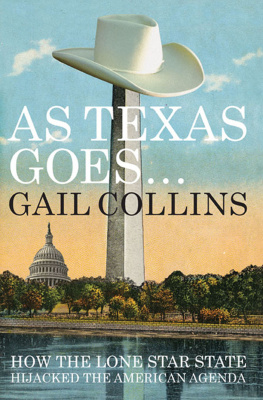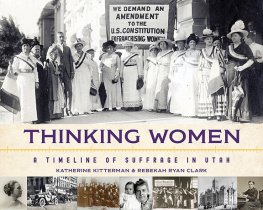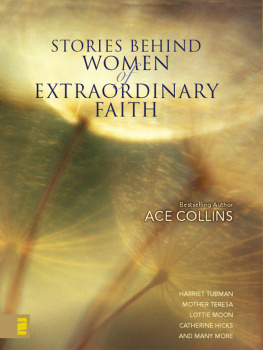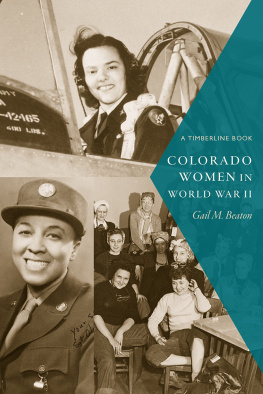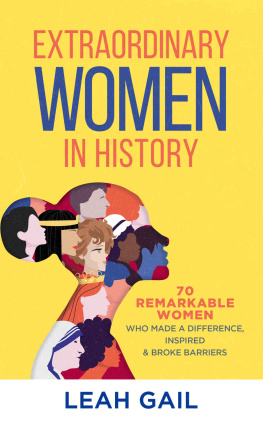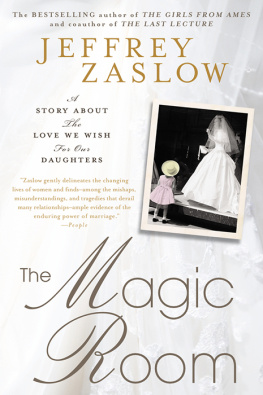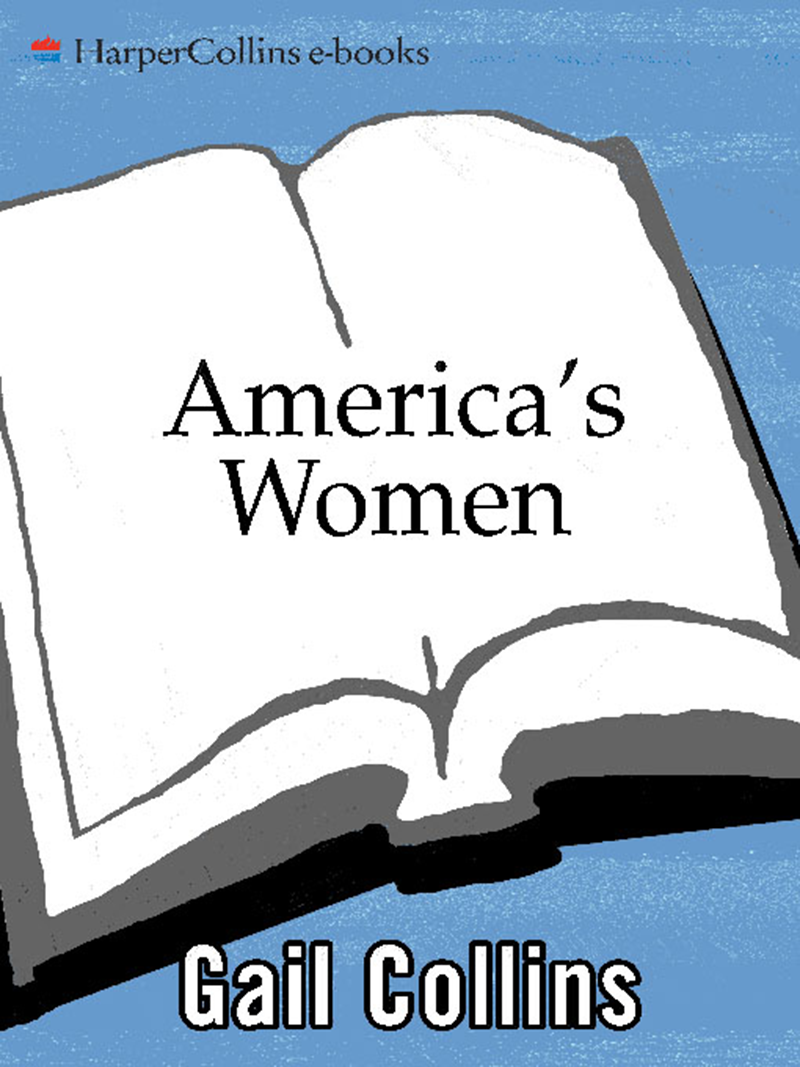Susan B. Anthony
A smart woman can do very well in this country.
When I look back through all of American history, the one moment that stays with me is the image of women standing on the deck of the Mayflower, staring out at a whole continent of dense forest. On the trip over, they must have been fixated on simply getting to land. They could never have imagined how wild it would seem, how big and empty of everything they knew. Plenty of male Europeans had made the same voyage before them, but they were explorers or traders or fishermen, out to get what they needed and return home. For the women, this was going to be the only home they would ever know again. The real job of settling was theirs. Most of them would die before they could put down real roots, but those who survived generally went on to have big families, whose descendants took special pride in knowing they shared the DNA of those simple, scared, determined women.
The history of American women is all about leaving homecrossing oceans and continents, or getting jobs and living on their own. Some of our national heroines were defined by the fact that they never nestedthey were peripatetic crusaders like Susan B. Anthony, Clara Barton, Sojourner Truth, Dorothea Dix. The center of our story is the tension between the yearning to create a home and the urge to get out of it.
I started thinking about American women when I was doing my last book, Scorpion Tongues, and stumbled across Louisa Adams, the wife of the sixth president of the United States and daughter-in-law of the formidable Abigail. As First Lady, Louisa was so miserable she spent much of her time eating chocolate and writing memoirs she called Adventures of a Nobody. But she had been a diplomats wife who traveled in midwinter from Russia, crossing the icy and corpse-laden fields of Europe in the middle of the Napoleonic War, alone in a carriage with her small son. She was a hostess so skilled that her party-giving helped propel her distinctly unlovable husband into the presidency. Youve got to take note of that kind of duality; it crops up all along our history. This was a country, after all, where some nineteenth-century females became famous for writing books about why women had to stay out of the public eye, while others traveled all around the country lecturing on how women should never leave home. In World War II, women pilots risked their lives pulling targets so that inexperienced gunners could practice firing at them. And women pilots were arrested if they left the air base wearing slacks after dark.
The history of American women is about the fight for freedom, but its less a war against oppressive men than a struggle to straighten out the perpetually mixed message about womens role that was accepted by almost everybody of both genders. Southern matriarchs aspired to be the image of the helpless female, then ran the plantations while their husbands went to Congressor luxuriated at a spa. Pioneer women rode sidesaddle and wore gloves to protect their soft hands, then crawled up the side of mountains with a newborn baby in one arm. Everyone believed that married women were obliged to stay home with their children, while everyone bought factory goods produced by poor working mothers, made from cotton picked by female slaves. When slavery ended, nothing irritated white Southernersor visiting Northernersmore than the idea that ex-slave women wanted to stop working and become homemakers.
Writing Americas Women gave me the opportunity to read hundreds of books about the women of this country, which was a joy. We live in a great age for womens history, one that makes it easy to forget that only a few decades ago college professors were discouraged from teaching the subject because people believed that there wasnt enough material to fill up an entire semester. I hope reading this book leads others back through the tracks of the writers Ive followed. From everything Ive learned, Ive tried to spin a story thats about both what women did and what it felt like for them to do it. Everything they achieved through the Victorian age was accomplished in very long dresses and, generally, tight corsets. This is the story of the woman who saved Washingtons army by setting fire to New York, and the mystery of what pioneers on the wagon trains did about menstruation and wet diapers. I tried to see the nineteenth century as an era when women first demanded the right to vote, but also as the time when they were medicating themselves into mercury poisoning and making their first cautious commitment to regular bathing. That period ended with the Gilded Age, when the suffrage movement went into a funk, when women first began earning a living behind a typewriter, and when the most glamorous chorus girls were the ones with huge thighs.
The middle of Americas Women is about the Civil War, and how women, black and white, confronted slavery and abolition. As in every other period of crisis, the rules of sexual decorum were suspended due to emergency. The chaos of the battlefield turned out to be the ideal ground for female initiativedisorganized and desperately in need of people who would work for nothing and do any task required. That pattern repeats itself throughout this story. It took our entire history to actually change the rules of proper female behavior. But those rules were temporarily abandoned whenever the country needed women to do something they werent supposed to do. And even in circumstances less critical, women were almost always welcomed in new enterprises that hadnt yet become either prestigious or profitablewhether it was early radio or early cattle drives.
The Great Depression unleashed a national war against working women, followed by World War II, when there was a national crusade to get women to take jobs. Our own era began with the late 1960s and early 1970s, when everything changed so fast the country was banning job discrimination against women while they still couldnt serve on juries in some states, and nonvirgins werent allowed to bring rape charges in others.
Everyone can choose their own heroines in this story; I have a particularly soft spot for the eccentric, heroic Grimke sisters, who braved violent mobs to speak out against slavery, and demonstrated, to the utter delight of the other female reformers, that it was possible to believe in womens rights and still find a husband. One of the tricks to being a great historical figure is to leave behind as much information as possible. We talk a lot more about the Pilgrims than Eleanor Dare of Virginia; she came first but vanished before history got a chance to know her. New England spinsters get way more than their share of attention because of their winning habit of keeping diaries. Native American women who had no written language left behind almost nothing of their voices. Its absolutely impossible to write this kind of book without wanting to apologize for the failure to give them their due.
The first women in America whose names we know actually came half a millennium before Eleanor Dare. Gudrid and Freydis were Vikings, relatives of Leif Eriksson, and they sailed with their men on missions of trade and exploration. Gudrid gave birth to the first European child in the New World, in what is now Canada, and was known for her ability to get along with the strange people the Vikings encountered in their travels. Freydis organized a massacre of her business partners, finishing off the wives and female servants herself.


